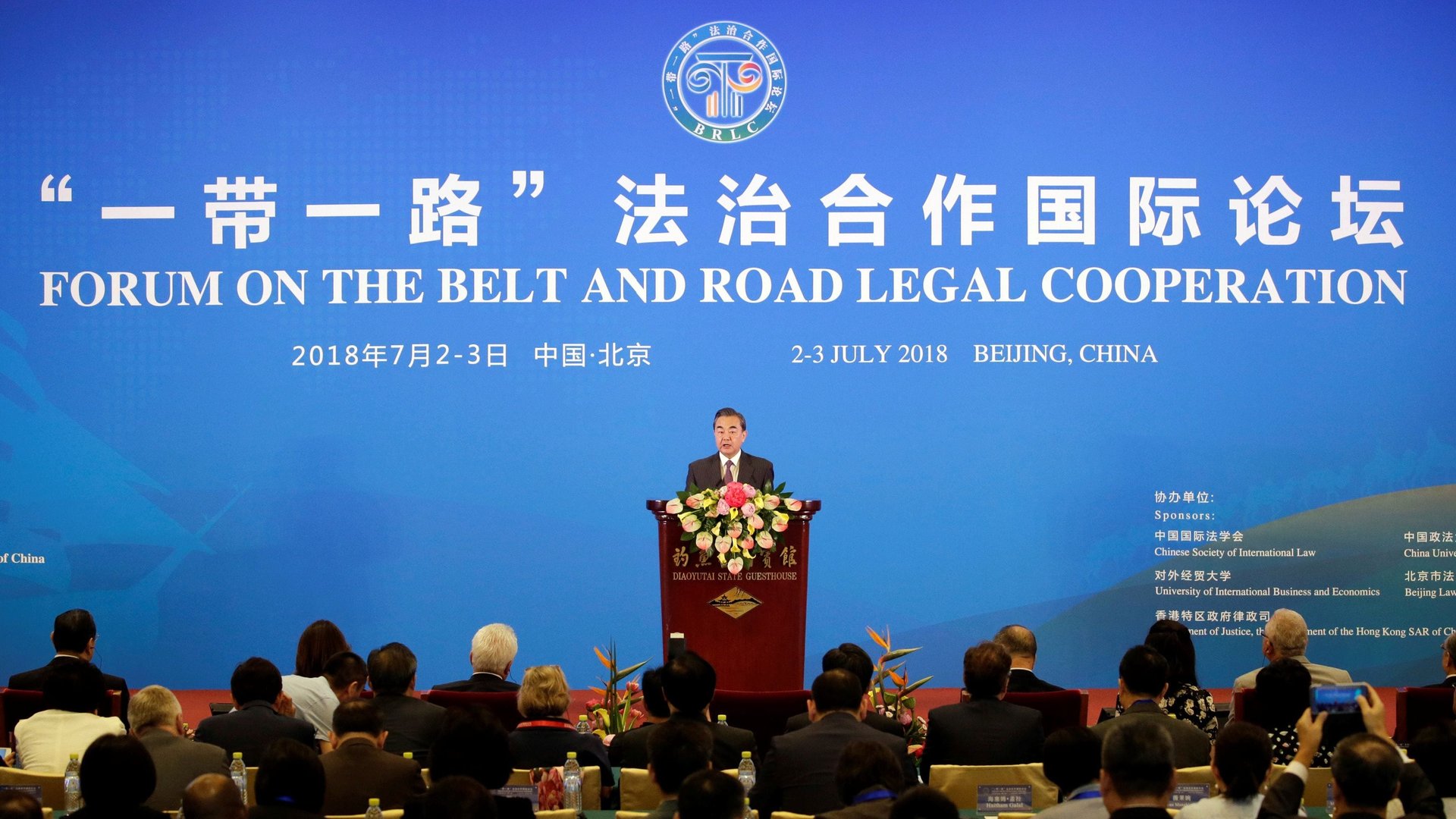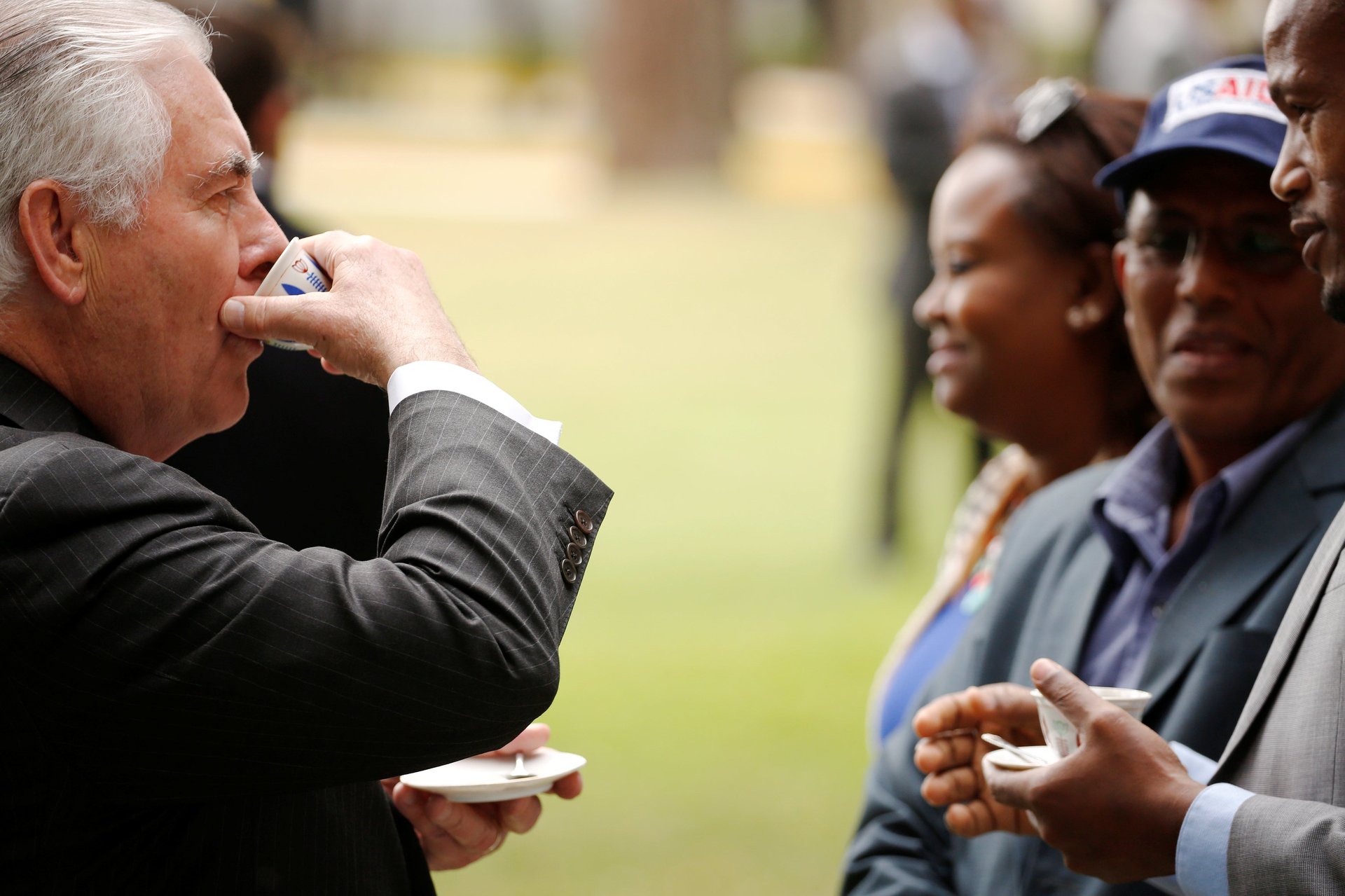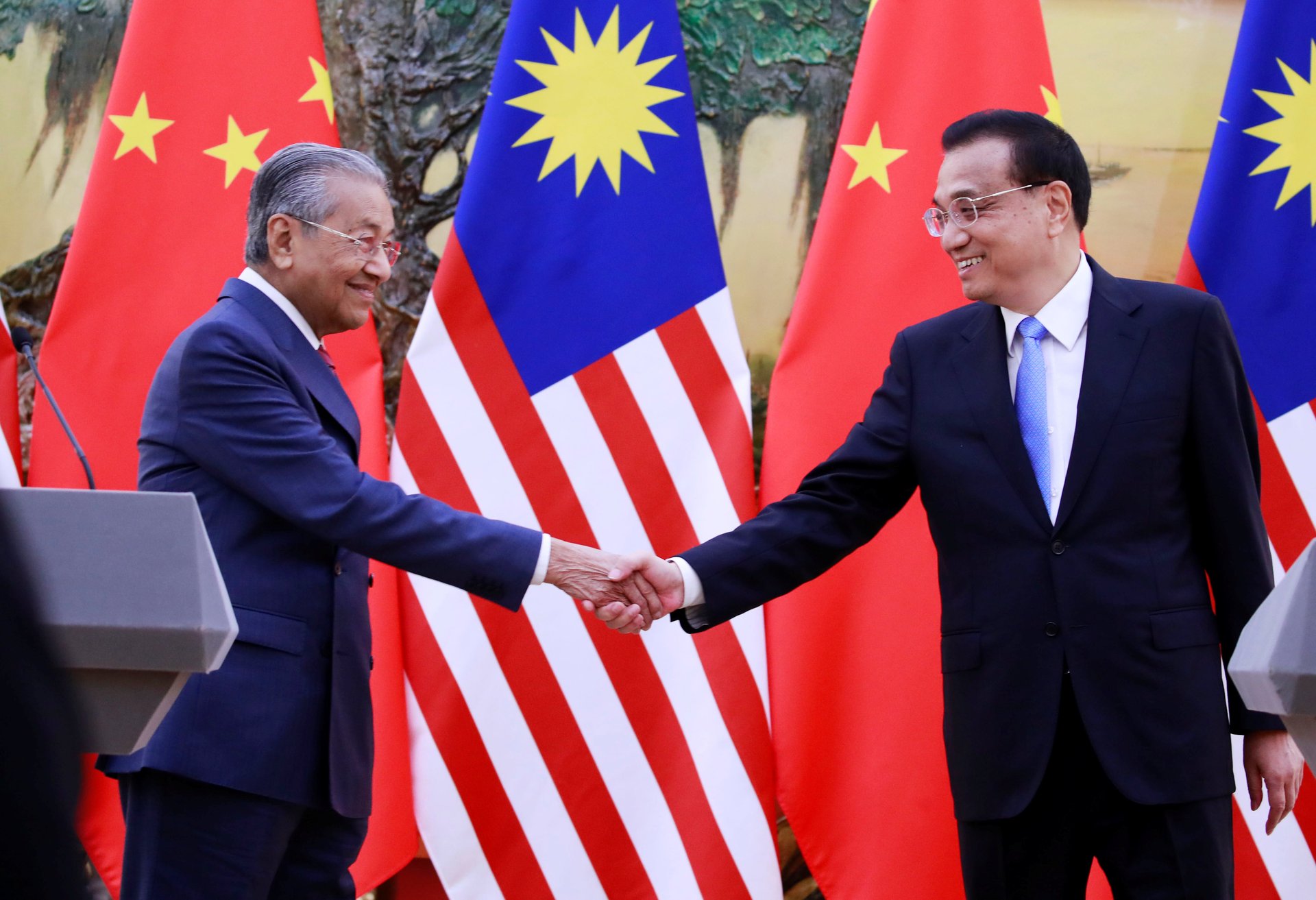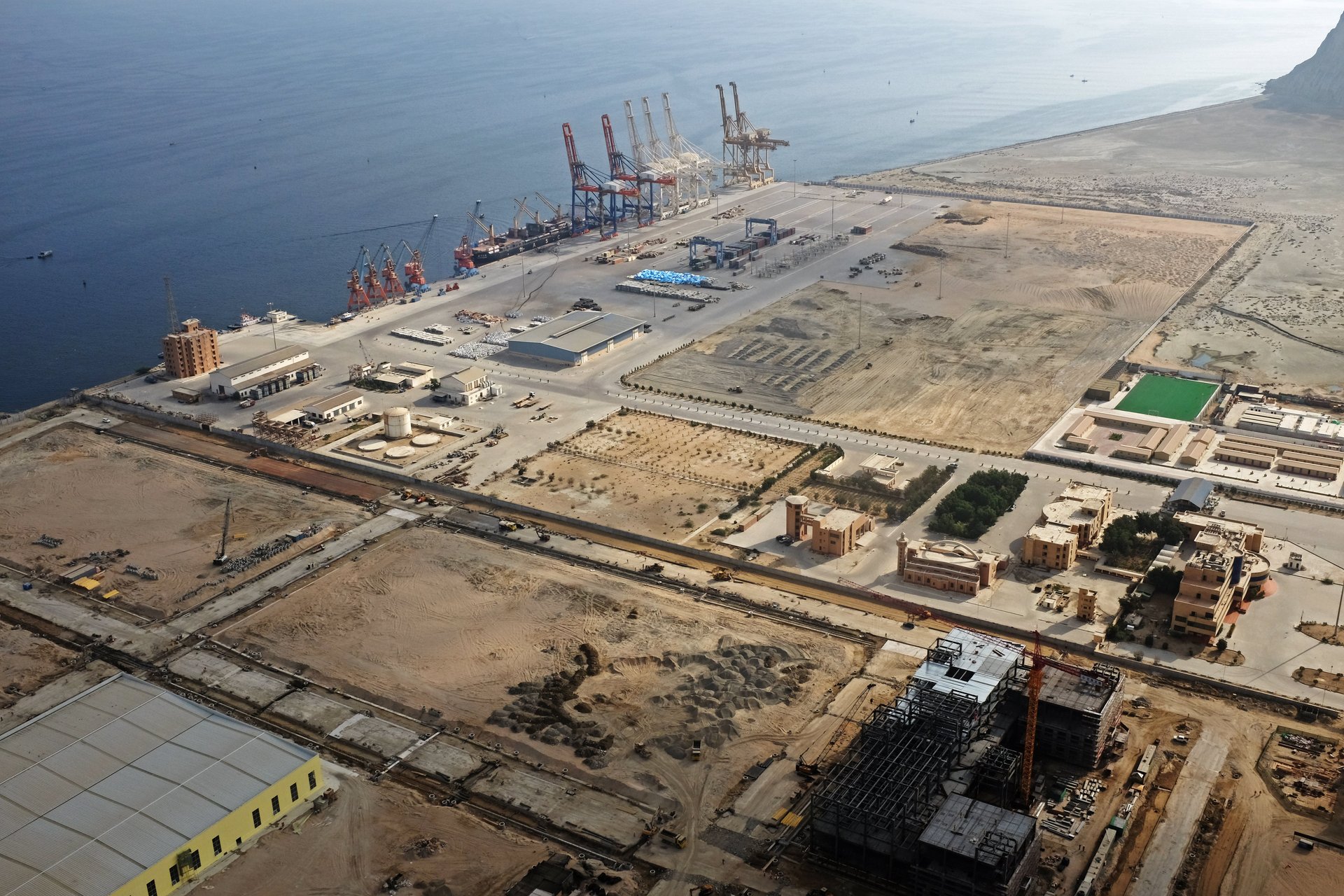From Asia to Africa, China’s “debt-trap diplomacy” was under siege in 2018
In 2013, China gave its financing of infrastructure around the world a new narrative, billing it as a modern-day Silk Road, a reinvention of historic trading routes between Europe and Asia. Last year, China’s lending got another new name, the rather unflattering “debt-trap diplomacy.”


In 2013, China gave its financing of infrastructure around the world a new narrative, billing it as a modern-day Silk Road, a reinvention of historic trading routes between Europe and Asia. Last year, China’s lending got another new name, the rather unflattering “debt-trap diplomacy.”
In 2018—as the infrastructure plan formally known as the Belt and Road Initiative marked its fifth anniversary—the chorus around the threat of China’s “debt traps” grew louder.
The name surfaced in the title of a 2017 analysis by an Indian strategic commentator that argued China was offering funding for unsound projects to secure Chinese access to resources or local markets, rather than to help local economies, and as a result “countries are becoming ensnared in a debt trap that leaves them vulnerable to China’s influence.” At the close of that year, when a cash-strapped Sri Lanka handed over its China-financed port to a Chinese state-run company on a 99-year lease, the line of argument looked ominously prescient.
This year China saw several countries reject or review its lending—especially in the wake of elections, which bring uncertainty that Beijing hasn’t contended with at home. The US, meanwhile, issued numerous stark warnings about borrowing from China in forums from Africa to Asia. Even at home, as its economy slowed, pledges of massive spending overseas prompted domestic criticism. Still, the year saw another $60 billion commitment to African nations, a new focus on funding digital infrastructure, and critiques of the idea that China’s lending is any more opportunistic than that of other economies.
Here’s a look at the ups-and-downs of China’s attempts to build influence by building stuff this year, and what to expect in the next.
January: A setback in South Asia
As part of its investments in South Asian nations surrounding rival India—which include a flagship project involving a port and a highway in Pakistan, and the Hambantota port in Sri Lanka—China has agreed to lend $24 billion towards power plants, a port and train infrastructure.
But early this year, the Voice of America reported, Bangladesh terminated a plan to have a Chinese state-run firm construct a 214-kilometer (130 miles) highway from capital Dhaka to its northeast. Reports said Bangladesh officials made allegations of corruption against the state-backed Chinese Harbor Engineering Company (CHEC) amid unhappiness over the price tag of $2 billion. Bangladesh will now finance the highway itself at a slightly reduced cost of around $1.5 billion.
March: A US warning about “predatory” Chinese debt
On the eve of his first (and only) official visit to Africa, former US Secretary of State Rex Tillerson drew a sharp contrast between US aid and lending in Africa, and China’s—one of many warnings from the US on the topic this year.
“The United States pursues, develops sustainable growth that bolsters institutions, strengthens rule of law, and builds the capacity of African countries to stand on their own two feet,” Tillerson said, speaking at George Mason University ahead of a trip that would take him to Ethiopia, Kenya, Chad, and Nigeria. “This stands in stark contrast to China’s approach, which encourages dependency using opaque contracts, predatory loan practices, and corrupt deals that mire nations in debt and undercut their sovereignty.”

That warning came just days after a report by the Center for Global Development, a US-based research nonprofit, warned that eight countries were at serious risk of above-average debt because of Chinese lending. The only African nation among the eight—Djibouti—is a worrying inclusion for the US, given it’s home to a major US military base, and as of last year, China’s first overseas military base as well. Djibouti government debt went from 50% of GDP (pdf, p. 1) five years ago to over 80% (pdf, p. 14). The US is concerned that like in Sri Lanka, China could eventually take control of a key port in Djibouti.
“There is nowhere else in the world where the US military is essentially co-located in close proximity to a country it considers a strategic competitor,” Kate Almquist Knopf, director of the Defense Department’s Africa Center for Strategic Studies told Foreign Policy, adding that, “this is not something the Pentagon is used to.”
Still, Tillerson’s exhortation to choose America was undercut by the fact he was fired by his boss two days into the trip—the same boss who reportedly referred to some African nations as “shithole” countries early this year. The news that Donald Trump was replacing Tillerson broke just after he returned.
“It doesn’t augur well for the long-term message of America to Africa, especially with the message he sounded, which was ‘beware of China,’” Pat Utomi, professor of political economy at Lagos Business School, told Reuters. “This means that the warning he was giving was of no consequence.”
May: Sri Lanka borrows—again—from China
Even after swapping debt for equity in its port and giving China a nearly century-long lease, Sri Lanka is struggling with its debts. In the first six months of the year its interest payments totaled $2 billion—while government revenues were about $5 billion. In May, the government of Maithripala Sirisena—who had campaigned in the 2015 elections against excessive credit that would make the country “a colony”—took a new $1 billion loan from the China Development Bank. Things could be even more challenging next year, when the country has to pay over $4 billion in interest, according to Reuters.
July: Pakistan’s new government murmurs about debt
In the wake of the fallout in Malaysia, Imran Khan’s win in Pakistan’s July national elections raised questions about whether the new government in Islamabad would also walk back from Chinese debt. In fact, not long after Khan’s cabinet was installed, officials expressed concern about the former government’s deals with China. While those complaints were walked back as Pakistan faced the loss of US military aid and a possible balance-of-payments crisis just months later, one project was scaled back by $2 billion. Given the $60 billion size of the flagship China-Pakistan Economic Corridor, that’s just a drop in the ocean.
August: Malaysia’s $20 billion rejection of China
Since Mahathir Mohamad came to power in May elections on a wave of anger about the corruption of former prime minister Najib Razak, the country has been coming to terms with a multi-billion-dollar corruption scandal at the 1MDB state fund that helped send Malaysian debt soaring to over 1 trillion ringgit ($251 billion).
Mahathir announced in July that he was reconsidering China-financed projects of more than $20 billion agreed to by the previous government. These included the East Coast Rail link project, a 690km (430 miles) line that would have connected the country’s ports on the South China Sea and the Straits of Malacca, as well as two natural gas pipelines. In August, after a visit to Beijing—where he said countries like his didn’t want “a new version of colonialism“—he cancelled the projects.

“It’s all about pouring in too much money which we cannot afford, we cannot repay and also because we don’t need these projects for Malaysia at this moment,” Mahathir told the Associated Press.
Elsewhere in the region, Myanmar sought to scale back a massive $7 billion port in its troubled Rakhine state again out of fears that it involves too much debt for the Southeast Asian country—in November it signed an agreement with China to go ahead with the project at a reduced cost of $1.3 billion in the initial phase.
September: China defends its role to African leaders
China welcomed leaders from almost every African nation to Beijing for the Forum on China-Africa Cooperation (FOCAC), the main pillar of China’s investment and lending to the continent, and an opportunity for leader Xi Jinping to characterize China’s spending as supportive, not inefficient or predatory. Xi announced that China would invest another $60 billion in Africa. While the amount was the same as its previous pledge in 2015, it represented a departure from its traditional pattern of doubling or tripling its financial commitments in Africa at each forum.
“Resources for our co-operation are not to be spent on any vanity projects but in places where they count the most,” Xi told African business leaders. Nevertheless, the following month saw Sierra Leone cancel plans for a China-funded airport. Tang Xiaoyang, deputy director of the Carnegie-Tsinghua Center for Global Policy, says that it’s not unusual for a share of preliminary projects to fall through. “It is a common practice for commercial projects that the plans/MOUs may not be realized because of financial constraints or other kinds of changes,” Tang told Quartz.
At the forum, China also announced it would offer 50,000 scholarships for Africans to study in China, setting off a backlash from Chinese social media users who wondered why the money shouldn’t be used for educating China’s own disadvantaged. On microblog platform Weibo, Stubborn Brother Tao noted (link in Chinese) the problems of getting an education in China’s rural areas, and asked, “If we can invest a large sum of money overseas, do we really not have any money [for this]?”
In response, a number of Chinese government officials, scholars and experts began posting articles on Weibo explaining the benefits of investing in Africa, noting the abundance of natural resources like copper and cobalt.
The same month as the Africa forum, China pledged to invest $5 billion in Venezuela, a once-rich country now in the throes of an economic crisis, unable to make interest payments on $50 billion in international bonds. In exchange, Venezuela will increase oil exports to China by a million barrels a day. Matt Ferchen, who runs the China and the developing world program at the Carnegie-Tsinghua Center for Global Policy, argues that the “dysfunctional” relationship with Venezuela is a sign that, counter to the dominant narrative about Chinese debt ensnaring other countries, the country that needs to fear excessive and unsustainable Chinese lending the most is China.
Also that month, a surprise opposition election victory over incumbent Maldives president Abdulla Yameen, who racked up large amounts of Chinese debt in his years in power, was followed by the new government trying to tally the damage—and rekindling its relationship with India.
October: The US has a new development agency to counter China
Trump signed off on the new US International Development Finance Corporation (USDFC), a $60 billion aid agency aimed at providing financial investment to developing countries—a countermeasure to China’s heavy investments.
USDFC folds in two previously existing agencies, but will have more financial flexibility, for example to make equity deals, apart from offering development aid. The agency revamp is a sign that China’s spending, and the US’s ensuing heartburn, will end up providing more options to developing countries, Quartz’s Yinka Adegoke argues. The US reformed and effectively doubled the budget of an agency the Trump administration was earlier planning to kill off in large part because of China, he says.
Over in Indonesia, where anti-Chinese sentiment often rises around elections, frequently targeted at the country’s own affluent ethnic Chinese, lending from China has become a focus of campaigning for presidential elections due in April. President Joko Widodo has courted Chinese investment and aid, but in October his rival’s campaign announced Prabowo Subianto would review China-funded projects in the Southeast Asian country if he won.
November: Pence tells Asia the US can offer a “better option”
Picking up Tillerson’s refrain—and doubling down on his own fiery October speech against China—US vice president Mike Pence warned Asian countries against borrowing from China at the Asian Pacific Economic Cooperation Summit (APEC).
“Projects they support are often unsustainable and of poor quality. And too often, they come with strings attached and lead to staggering debt,” said Pence. Contrasting the US to China, Pence presented the US as the “better option” to create economic prosperity in the region, a partner that does not “drown our partners in a sea of debt.”
Despite these warnings, China made advances in the US’s own backyard that month. Chile in November joined the more than half dozen Latin American and Caribbean countries that have agreed to be part of the Belt-and-Road program. Panama, which signed on to Belt-and-Road in 2017 after abandoning Taiwan as a diplomatic ally, this year accepted a Chinese bid to build the next bridge over the Panama Canal, and received a state visit in December from Xi in the wake of the G-20.
December: The military side of China’s flagship project in Pakistan

While Chinese officials have repeatedly denied that the Belt-and-Road plan involves an expansion of military power, a report in December revealed a military component to the $60 billion China-Pakistan Economic Corridor. According to a New York Times report, Pakistan’s Air Force is cooperating with China to build weapons, including fighter jets, for the Chinese army.
Lijian Zhao, deputy chief of mission at the Chinese embassy in Islamabad, took to Twitter to refute the Times report. Zhao called the report “Western propaganda” and said that CPEC is a “purely an economic program.”
According to the Times report, Pakistan is the only country to be granted access to the military service of China’s Beidou satellite navigation system. China’s pitching Beidou, which now has more than 30 satellites and began general global service on Thursday (Dec. 27), as an alternative to the US’s military-developed GPS system.
The sat-nav system is part of China’s efforts to steer its infrastructure cooperation with developing nations increasingly in the direction of advanced technology, connectivity, and space exploration—projects that would be less visible than the kinds of massive construction China has funded so far, and that are important to Beijing as it seeks to be at the forefront of technological advance amid suspicion from developed economies.